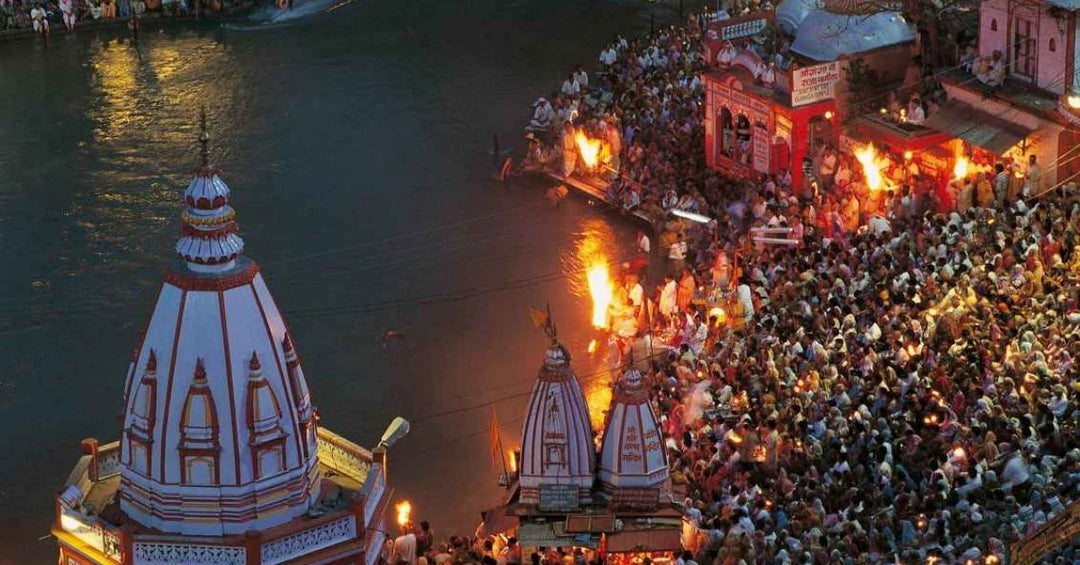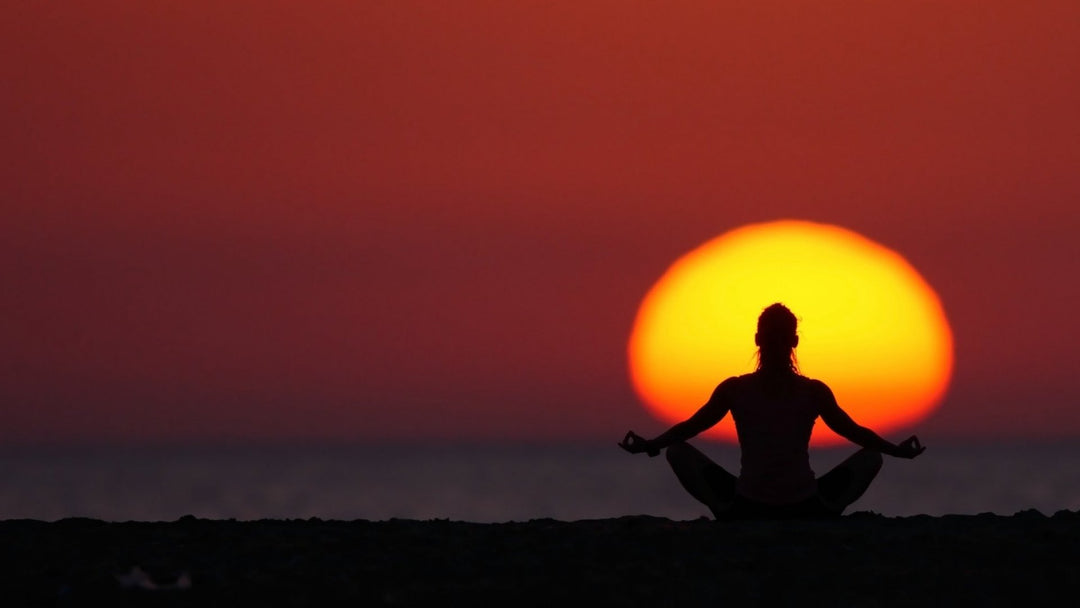About Lord Murugan
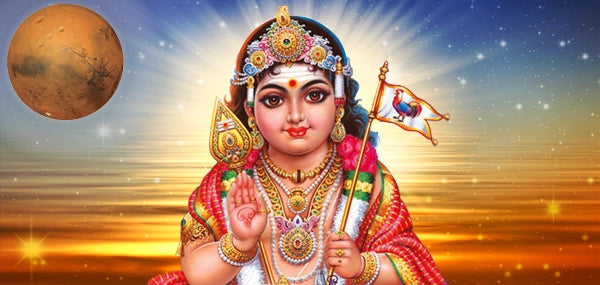
Lord Murugan, also known as Kartikeya, Skanda, Subramanya, or by various other names across different regions, holds a revered place in Hindu mythology. He is celebrated as the embodiment of valor, wisdom, and divine grace. Murugan is often depicted as a youthful god, wielding a spear, riding a peacock, and exuding unparalleled bravery and intelligence.
According to the Hindu scriptures, Lord Murugan is the son of Lord Shiva and Goddess Parvati. He is considered the commander of the divine army and a symbol of determination, courage, and spiritual growth. Murugan is worshipped in various parts of India, especially in the southern regions, where temples dedicated to him attract millions of devotees annually.
His legends, notably the epic battle against the demon Soorapadman, symbolize the triumph of good over evil and the importance of righteousness. Murugan's teachings emphasize the significance of inner strength, knowledge, and the pursuit of truth on one's spiritual journey.
Devotees seek his blessings for wisdom, success, protection, and the removal of obstacles, making Lord Murugan a beloved and cherished deity in Hindu culture.
What is special about Murugan?
Lord Murugan is revered for several unique attributes and qualities that set him apart in Hindu mythology:
Youthful Vigor: Murugan is depicted as eternally young, symbolizing vitality, energy, and enthusiasm. This aspect of youthfulness represents dynamism and the perpetual quest for knowledge and growth.
Warrior God: He is the epitome of bravery and courage, often depicted holding a spear, riding a peacock, and leading celestial armies into battle. Murugan represents the courage to confront challenges and overcome obstacles.
Intellectual Prowess: Lord Murugan is associated with wisdom and intelligence. He is considered the deity of knowledge, eloquence, and strategic thinking, embodying the importance of mental strength.
Family Dynamics: As the son of Lord Shiva and Goddess Parvati, Murugan signifies familial harmony, devotion, and the strength derived from family bonds.
Destroyer of Evil: Murugan's tales often revolve around vanquishing demons and restoring peace and righteousness. He represents the triumph of good over evil, inspiring devotees to combat negativity and uphold righteousness.
Spiritual Significance: His teachings emphasize the journey toward spiritual enlightenment, underscoring the importance of discipline, devotion, and inner strength in self-realization.
Worship and Festivals: Devotees celebrate various festivals dedicated to Murugan, such as Thaipusam and Skanda Sashti, where elaborate rituals, processions, and devotional practices are observed to seek his blessings for success, protection, and the removal of obstacles.
The multifaceted nature of Lord Murugan, encompassing courage, intellect, and spirituality, makes him a revered deity with a wide range of significance and appeal to devotees seeking guidance and inspiration in different aspects of life.
The powers of Lord Muruga
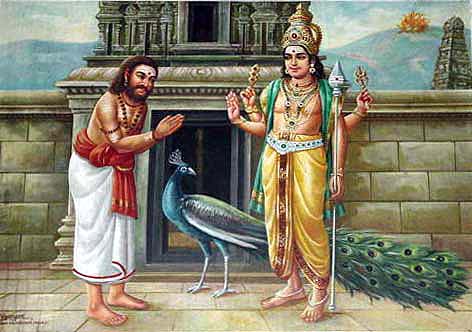
Lord Muruga, also known as Kartikeya or Skanda, embodies a diverse array of powers and capabilities within Hindu mythology. Renowned for his supreme intelligence, he symbolizes profound wisdom and divine intellect, inspiring seekers on their quest for knowledge. As the commander of celestial armies, Muruga is a fierce warrior and protector, invoked by devotees to ward off negative forces and surmount obstacles. His legend as the destroyer of evil highlights his unparalleled strength in defeating malevolent entities and restoring righteousness. Beyond his martial prowess, Muruga serves as a spiritual guide, offering direction and assistance in conquering inner conflicts and obstacles on the path to spiritual growth. Devotees seek his blessings for success, courage, and wisdom, believing in his ability to grant boons to sincere supplicants. Additionally, Muruga represents peace and harmony, acting as a peacemaker in conflicts and unifying diverse cultures through his revered worship. His multifaceted powers make him a revered deity, revered for guidance, protection, and strength in various facets of life.
What is Lord Murugan's Favourite food?
In Hindu mythology, Lord Murugan's favorite food is said to be "prasadam," which refers to food offerings made to deities during worship rituals. Devotees often offer various items such as fruits, milk, honey, and sweet dishes like modal, a type of sweet dumpling, as part of their worship to seek the deity's blessings and favor. While there isn't a specific mention of a particular favorite food, these offerings made with devotion and purity are considered pleasing to Lord Murugan during religious ceremonies and festivals.
Which day is special for Murugan

In Hindu tradition, Tuesdays are considered particularly special for Lord Murugan. Devotees often observe fasts, visit temples dedicated to Murugan, and perform special prayers and rituals on this day to seek his blessings and favor. Additionally, festivals like Skanda Sashti, which occurs on the sixth day of the lunar month, are dedicated to Lord Murugan and are considered significant times for his worship and celebration. These occasions are marked with elaborate ceremonies, devotional gatherings, and processions, honoring the deity's valor and grace.
The Powerful Murugan Temple
The Palani Murugan Temple, situated in the town of Palani in Tamil Nadu, India, is renowned as a powerful and sacred pilgrimage site dedicated to Lord Murugan. Perched atop the Palani Hills, this temple is revered for its spiritual significance and the deity's immense blessings.
What distinguishes this temple is the idol of Lord Murugan, known as Dandayudhapani Swami, which is crafted from an amalgamation of nine minerals, believed to possess divine energy and potency. Devotees from far and wide flock to this temple seeking blessings, fulfillment of wishes, and liberation from troubles and afflictions.
A notable aspect of the temple is the Arulmigu Dhandayuthapani Swamy Thirukoil, accessible via the 690 steps of the stone staircase known as the 'Pachai Pathi Veedu.' Pilgrims undertake this climb as an act of devotion and penance, often carrying 'kavadi' (a form of sacrifice or offering) as a gesture of gratitude or to seek the deity's grace.
The temple's vibrant festivals, especially Thaipusam and Panguni Uthiram, draw massive crowds where devotees engage in fervent prayers, processions, and rituals to honor and seek the blessings of Lord Murugan. The Palani Murugan Temple stands as a testament to faith, spirituality, and the unwavering devotion of countless devotees towards Lord Murugan.
Why does Murugan have 6 faces
The depiction of Lord Murugan with six faces, known as Shanmukha or Arumugam, has symbolic significance in Hindu mythology. Each face represents different attributes and aspects of his persona:
Six Faces: The six faces are believed to symbolize the five senses (sight, hearing, smell, taste, touch) along with the mind or intellect, collectively representing the power of perception and wisdom. It signifies his all-encompassing awareness and mastery over these senses and the mind.
Expanded Knowledge: Each face is associated with immense wisdom and intelligence, signifying Murugan's vast knowledge and understanding of the universe and its intricacies.
Versatility: The six faces also portray Murugan's versatility in handling various situations and challenges with multifaceted perspectives, showcasing his ability to approach issues from different angles.
Guardian of Directions: In some interpretations, the six faces represent Murugan as the guardian of the six cardinal directions, signifying his omnipresence and ability to protect and guide devotees in all directions.
Overall, the depiction of Lord Murugan with six faces signifies his profound wisdom, omnipresence, and ability to perceive and comprehend the world through various perspectives, guiding and protecting his devotees in their journey toward spiritual growth and enlightenment.
What are the various names of Lord Murugan, and what do they signify in Hindu mythology?
Certainly! Lord Murugan, revered in Hindu mythology, is known by various names, each reflecting distinct aspects of his character and significance. Commonly referred to as Murugan, meaning "the beautiful one," this name highlights his charming and handsome appearance. Kartikeya, another prevalent name, originates from 'Krittika,' the Pleiades constellation, signifying his upbringing by the Krittikas and his role as the leader of celestial armies. Skanda, derived from 'spilled or oozed,' recalls his birth from sparks emitted by Shiva's third eye, symbolizing his association with power and warfare. Subramanya, meaning "dear to the Brahmins" or "auspicious one," emphasizes his benevolent nature and auspiciousness. Shanmukha represents his six faces, each embodying elements including the mind, while Guha, "the secretive one," portrays his connection to inner spiritual practices through his dwelling in the heart's cave. These names collectively depict the multifaceted nature of Lord Murugan as a warrior, protector, and deity associated with wisdom and spiritual growth in Hindu traditions.
The symbolism behind Lord Murugan riding a peacock and wielding a spear?
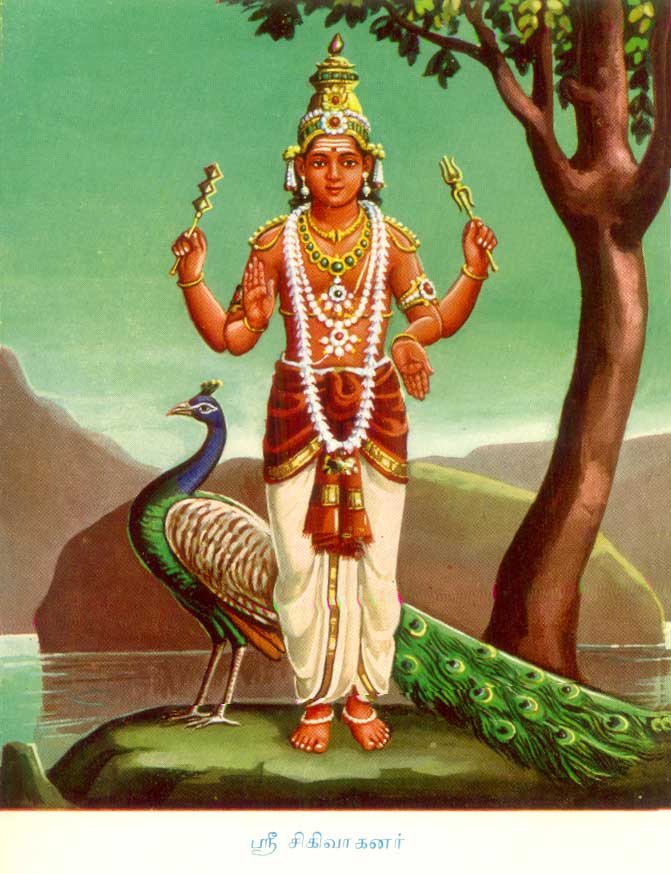
Lord Murugan riding a peacock and wielding a spear holds deep symbolism in Hindu mythology. The peacock, known for its beauty and ability to trample on snakes, symbolizes the conquest over ego and vanity. Murugan riding the peacock signifies his control over these negative aspects of human nature. Additionally, the peacock's ability to trample snakes alludes to Murugan's role as a destroyer of evil forces, representing his victory over ignorance and darkness.
The spear, known as the "Vel" in Tamil, is a significant weapon wielded by Lord Murugan. It was gifted to him by Goddess Parvati to vanquish the demon Surapadman. Symbolically, the spear represents divine knowledge and the power to pierce through ignorance. It also embodies the ability to remove obstacles and destroy negativity, signifying Murugan's role as a protector and a bringer of wisdom to his devotees.
Therefore, the imagery of Lord Murugan riding a peacock and holding a spear carries profound symbolism, portraying his ability to conquer ego and evil while wielding divine knowledge to overcome obstacles and guide his devotees toward spiritual enlightenment.
How does the legend of Lord Murugan's birth highlight important aspects of Hindu beliefs and values?
The tale of Lord Murugan's birth epitomizes several key facets of Hindu beliefs and values. It symbolizes the cyclical nature of creation, destruction, and rebirth, mirroring the perpetual cosmic cycle within Hindu cosmology. Shiva's opening of his third eye signifies destruction, yet from this act emerges Murugan, emphasizing the interconnectedness and continuity of these cosmic forces.
Moreover, Murugan's birth underscores the significance of divine purpose and intervention. He incarnated to vanquish the demon Surapadman, embodying the Hindu concept of avatars—divine manifestations sent to restore balance and uphold righteousness.
This narrative also underscores the importance of familial piety and devotion. Murugan's unwavering commitment to his parents, Shiva and Parvati, by undertaking the task of defeating Surapadman at a tender age exemplifies the Hindu ethos of honoring and obeying one's parents.
Furthermore, it magnifies the eternal struggle between good and evil. Murugan's birth and subsequent triumph over Surapadman symbolize the perennial conflict between virtue and vice, reinforcing the belief in the ultimate victory of righteousness over malevolence.
Additionally, the legend extols Murugan's valor and bravery, portraying him as a warrior deity. This aligns with Hindu values that exalt courage and resilience in adversity.
In essence, the legend of Lord Murugan's birth encapsulates fundamental Hindu beliefs—such as the cyclical nature of existence, divine purpose, reverence for parents, the eternal battle between good and evil, and the valor in facing challenges—that continue to shape the ethos and values of Hindu culture and spirituality.
In which regions of India is Lord Murugan predominantly worshipped, and what are the significance and rituals associated with his worship?
Lord Murugan is predominantly worshipped in South India, particularly in the states of Tamil Nadu, Kerala, Karnataka, and Andhra Pradesh. However, his worship extends beyond these regions, with significant devotion found in Sri Lanka, Malaysia, Singapore, and other places with Tamil diaspora.
The worship of Murugan, known as Muruga or Karthikeya, involves various significant rituals and practices:
Temples: Temples dedicated to Lord Murugan, called "Murugan Kovils" or "Murugan Temples," are spread across these regions. Among the most famous are the Aru Padai Veedu (Six Abodes) temples in Tamil Nadu, each linked to a specific episode in Murugan's life.
Festivals: Thaipusam is one of the most prominent festivals celebrated in honor of Lord Murugan. It involves devotees making penance and offerings, often carrying Kavadis (elaborate structures) as acts of devotion. This festival is marked by processions, music, and rituals, drawing devotees from various parts of the world.
Kavadi Attam: This is a unique form of devotion where devotees carry a 'Kavadi,' a physical burden usually made of a wooden or metal structure adorned with decorations and peacock feathers, and perform dance-like movements as an offering to Murugan. This act symbolizes fulfilling vows and seeking blessings.
Poojas and Offerings: Regular rituals and daily poojas are conducted in Murugan temples. Offerings like milk, fruits, flowers, and specially prepared sweets are made to the deity as a form of devotion.
Recitation of Sacred Texts: Devotees often recite sacred texts like "Kanda Shashti Kavasam" and "Skanda Purana" hymns, praising Murugan's valor and seeking his blessings for protection and wisdom.
Fast and Vows: Some devotees observe fasts on specific days associated with Murugan and undertake vows, seeking his blessings for various needs or to overcome specific challenges.
The worship of Lord Murugan in these regions is deeply rooted in the rich mythology and stories surrounding his birth, exploits, and divine attributes. The rituals and practices associated with his worship reflect devotion, valor, and the pursuit of spiritual growth and protection.
In which regions of India is Lord Murugan predominantly worshipped, and what are the significance and rituals associated with his worship?
Lord Murugan holds a significant place in the religious landscape of South India, particularly in the states of Tamil Nadu, Kerala, Karnataka, and Andhra Pradesh. His worship is deeply entrenched in the culture and traditions of these regions.
Devotees revere Lord Murugan through various rituals and practices:
Temples: Numerous temples dedicated to Lord Murugan, often situated atop hills or in scenic locations, attract pilgrims and devotees. Temples like Palani, Thiruchendur, and Swamimalai in Tamil Nadu are renowned centers of worship.
Festivals: Thaipusam, celebrated with great fervor, stands as one of the most significant festivals devoted to Murugan. Devotees observe penance, engage in processions, and carry elaborate structures called 'Kavadis' adorned with decorations to seek blessings.
Kavadi Attam: This is a unique dance ritual involving devotees carrying 'Kavadis,' symbolizing their burdens or vows, and dancing to rhythmic beats as an act of devotion and fulfillment of vows.
Poojas and Offerings: Regular rituals, daily prayers, and special poojas are conducted in Murugan temples. Devotees offer items like milk, fruits, flowers, and specially prepared sweets as a gesture of reverence.
Scripture Recitations: Devotees chant hymns and sacred texts like "Kanda Shashti Kavasam" and excerpts from the Skanda Purana, praising Lord Murugan's valor and seeking his blessings for protection and guidance.
Vows and Fasts: Some followers observe fasts and undertake vows on specific days associated with Murugan, seeking his blessings to overcome challenges or fulfill personal wishes.
The worship of Lord Murugan in these regions is not just a religious practice but an integral part of the cultural identity. It embodies devotion, courage, and the pursuit of spiritual well-being among devotees, drawing from the rich mythology and legends associated with the deity.
Conclusion:
In the vibrant tapestry of Hindu mythology and spirituality, the worship of Lord Murugan stands as a beacon of devotion, courage, and spiritual pursuit, particularly in the regions of South India. Revered in states like Tamil Nadu, Kerala, Karnataka, and Andhra Pradesh, Lord Murugan's significance transcends religious boundaries, weaving into the cultural fabric of these areas.
From the towering temples nestled atop hills to the fervent celebrations during festivals like Thaipusam, the devotion to Lord Murugan is palpable. Rituals such as the unique Kavadi Attam, the offering of prayers and specially prepared offerings, and the recitation of sacred texts reflect the depth of veneration for this deity.
Lord Murugan, with his tales of valor, embodies the virtues of righteousness and courage, inspiring devotees to seek spiritual growth and protection. The rituals associated with his worship not only fulfill religious obligations but also serve as expressions of faith, gratitude, and the pursuit of inner strength.
As devotees chant hymns and undertake vows, their unwavering belief in Lord Murugan's blessings to overcome obstacles and seek guidance echoes through generations. The worship of this revered deity remains a cornerstone of cultural identity, enriching the spiritual landscape and fostering a profound connection between devotees and the divine. Through its rituals and devotion, the worship of Lord Murugan continues to illuminate the path of spiritual fulfillment and cultural heritage in the hearts of millions.

